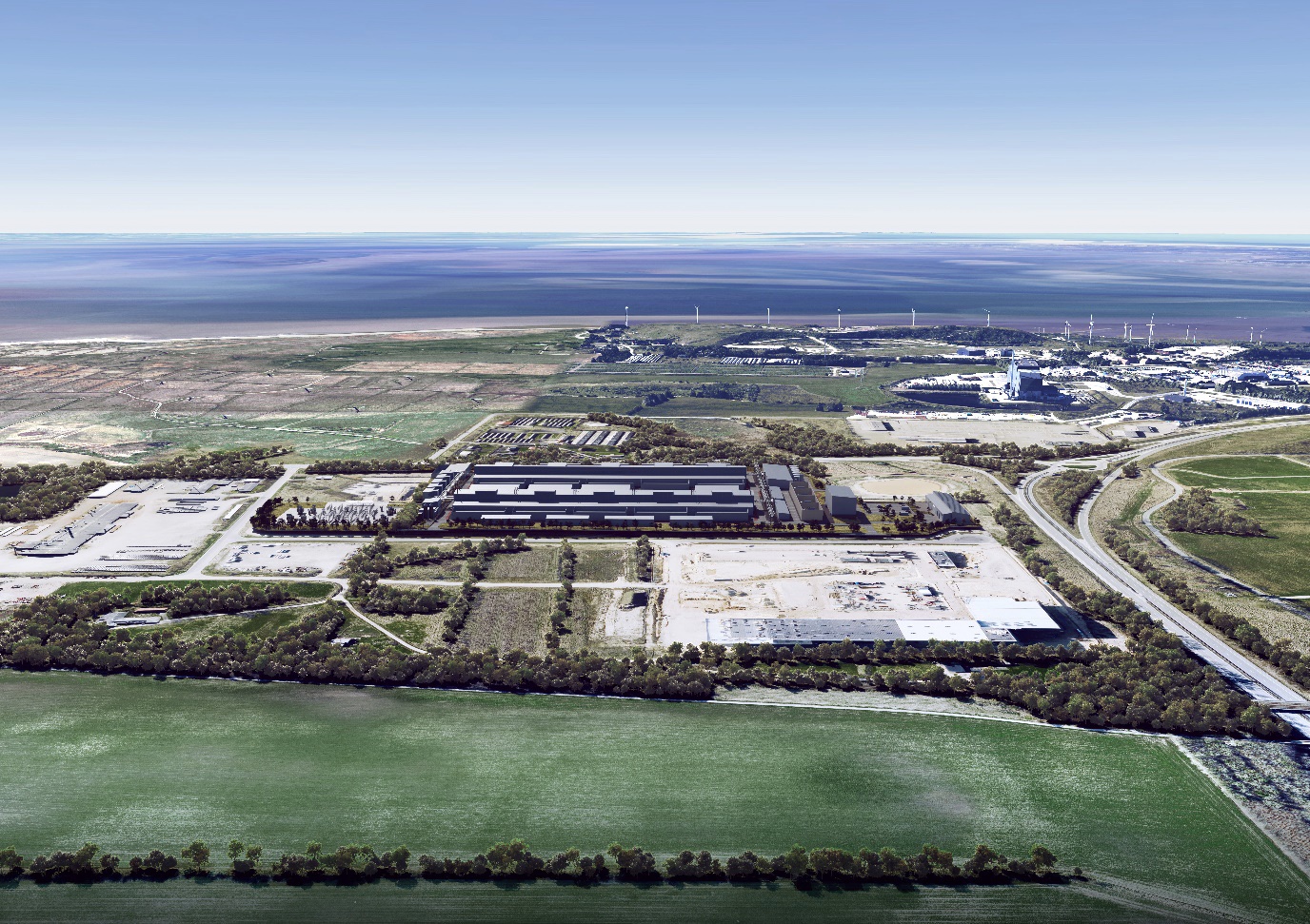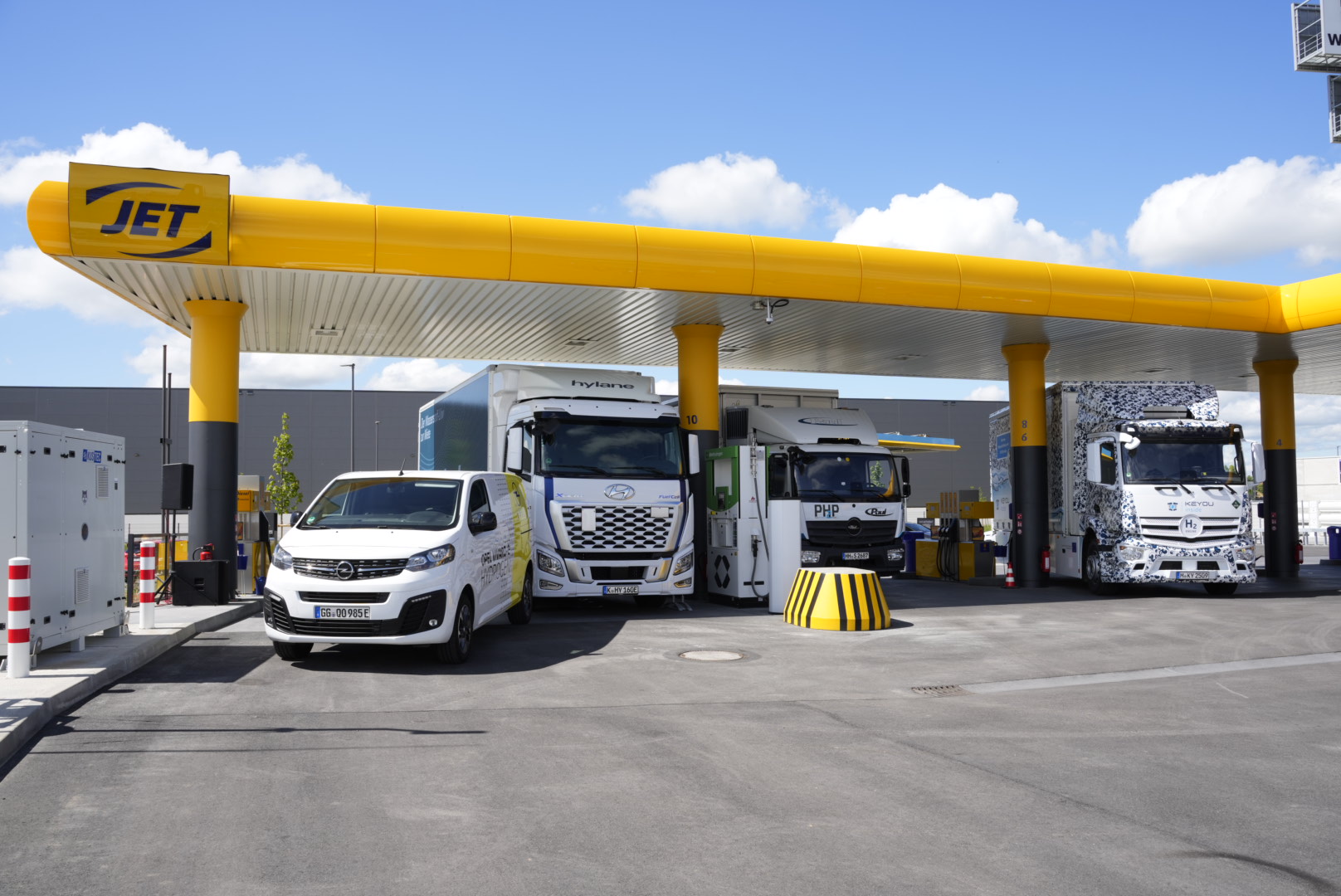Your wastewater will be turned into green hydrogen in the future
Note: As of 29 October 2024, HE Energy Europe has rebranded to MorGen Energy. The content below reflects information prior to this change.
PtX production in Esbjerg can, moving forward, absorb large quantities of wastewater, which can be greatly beneficial in future energy production. A new agreement between DIN Forsyning, H2 Energy Esbjerg, and HØST PtX Esbjerg ensures this.
In the future, when you flush the toilet, you will be contributing to the Power-to-X production if you live in Esbjerg. This has just been agreed-upon due to agreements between DIN Forsyning and two major players in the PtX field, H2 Energy Esbjerg and HØST PtX Esbjerg. Both have signed agreements stating that the water they will use for their facilities in the future will come from purified wastewater from DIN Forsyning’s two large treatment plants in Esbjerg.
The production of green hydrogen takes place in a Power-to-X facility where electrolysis converts electricity into hydrogen by splitting water molecules (H2O) into hydrogen (H2) and oxygen (O). It requires vast amounts of electricity and vast amounts of water. Up to 4 million m3 of water is needed solely for the two upcoming PtX facilities in Esbjerg. To avoid unnecessarily draining groundwater resources and protect drinking water resources, a different approach is needed. Helle Damm-Henrichsen, the director of DIN Forsyning, explains:
”The core idea is to take our wastewater, purify it, and convert it into a valuable resource that can contribute to local value creation. Fundamentally, this is upcycling in its purest form. We have an abundance of purified wastewater, and we’re unlikely to run out. In Esbjerg alone, we discharge 15 million m3 annually. Besides protecting our precious drinking water resources, another advantage is that we don’t need to use additional resources to pump the water from the ground. It’s already present in our system,” says Helle Damm-Henrichsen, who is delighted about the collaboration with both HØST PtX and H2 Energy Esbjerg.
Strong collaboration results in environmental benefits
Both at HØST PtX Esbjerg and H2 Energy Esbjerg, there’s joy in the fact that thorough studies show it’s possible to use wastewater in the process. Generally, collaboration between various sectors is of great importance when shaping the energy production of the future.
“Our society can reap major benefits from cross-sector coupling, and the use of wastewater is yet another excellent example of this. Here, we’re taking a resource which we previously couldn’t use for anything, quite the contrary, and now we’re turning it into an asset that benefits us all. We’re already planning to cooperate with DIN Forsyning on using surplus heat for district heating, and this is where Esbjerg has some unique prerequisites. We believe in good collaboration, and we also believe that PtX in Esbjerg can provide jobs, more supply security, and significant environmental benefits, which are crucial parameters for all of us,” says Project Director at HØST PtX Esbjerg, David Dupont-Mouritzen.
H2 Energy Esbjerg also sees multiple advantages in the cross-sector coupling:
“We exist to play an active role in the fight against climate change, both locally and internationally. Cross-sector coupling is essential for a successful green transition, and H2 Energy Esbjerg’s PtX facility can act as a link in several valuable contexts. This includes providing surplus heat to citizens of Esbjerg and Varde through the district heating system, optimal utilization of green electricity from renewable sources, and of course, leveraging the local wastewater for the production of green hydrogen,” says Operations Manager at H2 Energy Esbjerg, Mark Fogh Pedersen.
DIN Forsyning, along with HØST and H2 Energy Esbjerg, is ensuring that the plans can be implemented in practice. However, there are challenges, especially when it comes to the legislation within the water sector:
“The economic frameworks of the Danish water sector law are designed to protect citizens from major price increases while ensuring that Danish water and wastewater companies operate as efficiently as possible. However, these frameworks become a challenge when it comes to creating new innovative solutions to benefit the green transition. Therefore, different frameworks are needed when we enter commercial agreements and, for instance, want to offer purified wastewater for PtX. We hope that legislation will keep pace with development and, in this way, support the green transition in Denmark,” concludes Helle Damm-Henrichsen.
Information box:
- Forsyning purifies approximately 24 million m3 of wastewater annually – of which 15 million m3 is in Esbjerg alone.
- It’s expected that the two PtX plants will require between 3 and 4 million m3 of water annually for electrolysis.
- In comparison, the total drinking water consumption in the area covered by DIN Forsyning (Esbjerg and Varde) is about 8 million m3 per year.
- Large-scale industrial water consumers will first be offered purified wastewater and then groundwater that is not suitable for drinking.
- DIN
Notes for Editors:
Media Contacts:
MorGen Energy AG
Dirlene Lopez
Email: media@morgenenergy.com
About MorGen Energy
In 2020, Trafigura announced an investment in H2 Energy, forming a joint venture, H2 Energy Europe, to develop green hydrogen ecosystems across Europe. In October 2023, Trafigura became the majority owner of H2 Energy Europe. On 29 October 2024, H2 Energy Europe rebranded as MorGen Energy. MorGen Energy’s major projects covering different parts of the hydrogen value chain include working towards a final investment decision on a 1GW scale green hydrogen project in Esbjerg, Denmark converting offshore wind power and a 20MW green hydrogen project in Milford Haven, South Wales. MorGen Energy is working towards the roll out of a hydrogen filling station network with sites along major transport routes across Germany.





